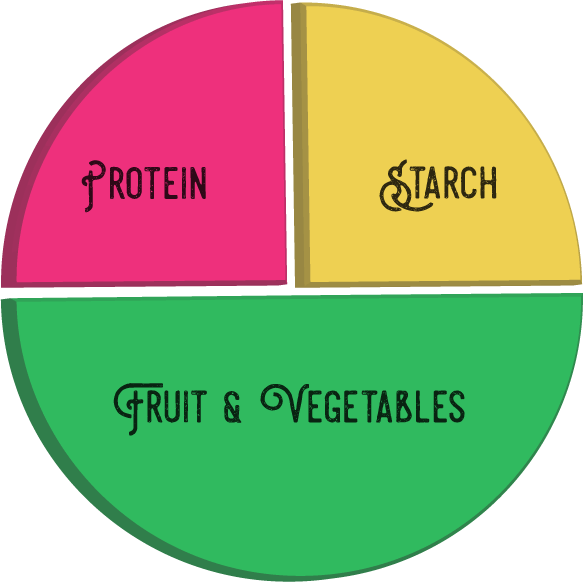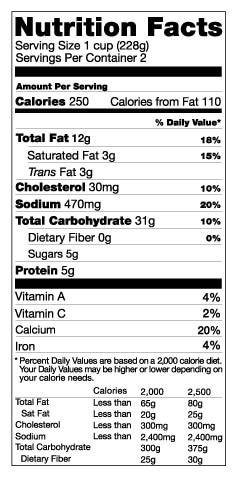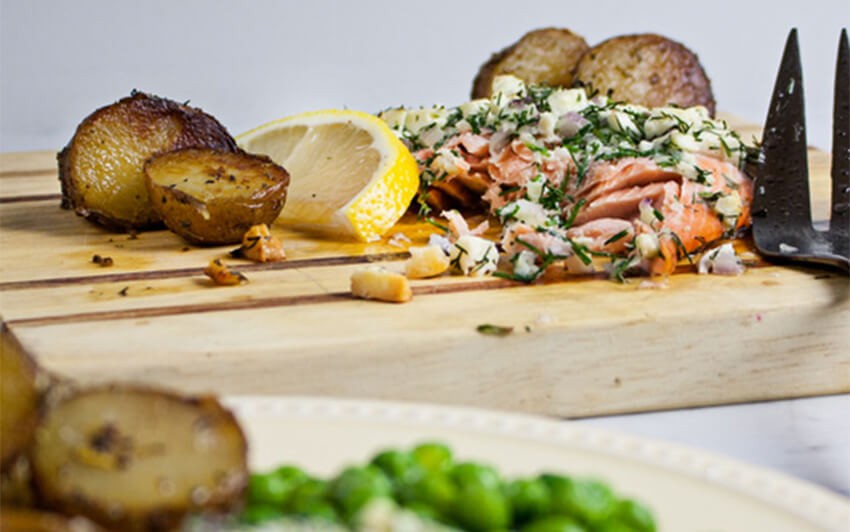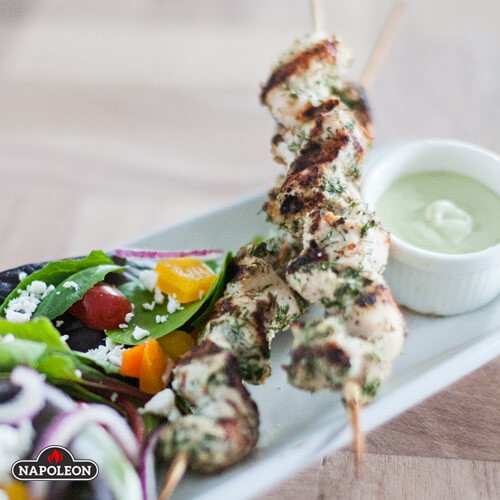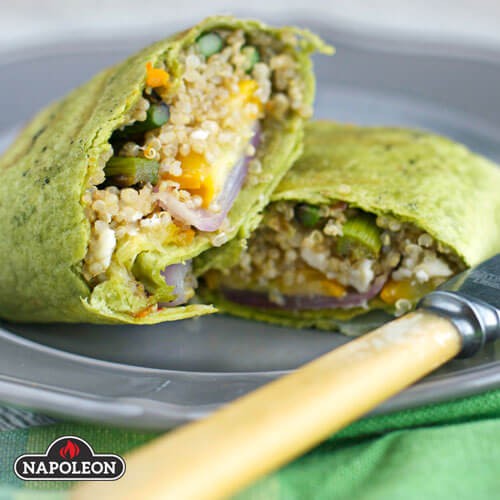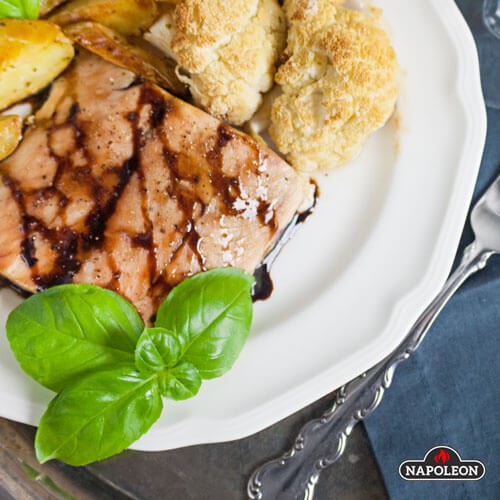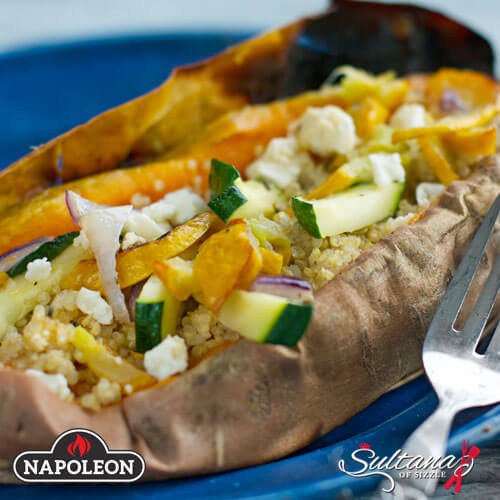
How To Eat Healthy While Cooking On The BBQ
Eating a healthy well-balanced diet can be challenging for some and you may not think so, but your grill can help you cook meals that are delicious and good for you too. Yes you CAN eat a healthy diet while using your BBQ and we will give you some pointers on how.
It All Starts With Portion Control
Whether you are out or at home cooking for yourself, it is imperative that you practice portion control, no matter what you are eating. What does that mean? Divide your plate in half, then divide one of those halves into quarters. In one of the quarters place your protein, around 3 oz. or the size of a deck of cards. In the second of the quarters add about 1 cup of starch. This can be pasta, rice, potatoes, or any other starchy food that you enjoy. The last half of your plate should be filled with 1½ cups or more of brightly colored vegetables.
Protein
The average man should consume around 56 grams of protein, while women should consume 46 grams. Excellent sources of protein include beef, chicken and turkey, fish, pork, spinach, peas, eggs, beans, and lentils to name a few. When consuming meat as a main protein source, opt for lean cuts and go grass-fed/free-range/antibiotic and hormone-free.
Starch
Starchy foods are high in carbohydrates, which the body breaks down into glucose for energy, and includes bread, pasta, rice, couscous, potatoes, and cereals. It is important when consuming these foods to aim for starchy foods that are high in whole grains to provide rich fiber, B Vitamins, iron, and even some calcium.
Brightly Colored Fruits & Vegetables
The brighter the colors of your fruit and vegetables, the more “good stuff” they contain. You should be consuming 2½ cups per day and that is why they should make up the largest portion, pretty much half, of whatever you are eating for a meal. They are low in fat, high in fiber and vitamins, and are downright delicious!
Read Your Labels
Not everyone can make their meals from scratch, and that’s alright. If you are eating foods that are processed in any way, remember to read the labels to make sure that you know what you’re getting when you eat these foods. All calculations on labels are based on the typical 2000-calorie, adult diet.
Serving Size & Number of Servings
The first thing you will see, at the top of the label is serving size and number of servings. You would be surprised how many actual servings are in some foods. You also want to have a look at calories per serving. This directly relates to the serving size and will tell you if you are overeating or can have more of the food you are enjoying.
Fat, Cholesterol, Sodium, & Carbohydrates
The next thing on the label is the total amounts per serving and daily percentage of these particular components. While some fats, sodium, cholesterol, and carbohydrates are healthier than others – essential for maintaining your body, cell membranes, and providing energy – the ones found in processed foods that require labeling are unlikely to be of that good variety and you should be conscious of consumption.
Saturated Fat vs. Trans Fat
Saturated fats are fatty acid molecules that don’t have double bonds and considered to be less healthy. Trans fats are manufactured through hydrogenation, which adds to the shelf life and flavor stability of oils and foods that contain them.
Carbohydrates
Starchy foods are high in carbohydrates, which the body breaks down into glucose for energy, and includes bread, pasta, rice, couscous, potatoes, and cereals. It is important when consuming these foods to aim for starchy foods that are high in whole grains to provide rich fiber, B Vitamins, iron, and even some calcium.
Vitamins
Vitamins are the building blocks to many things in your body. Unless you are knowledgeably deficient in something, you don’t really have to worry about the proportions of vitamins that you are consuming in processed food. You are likely getting most of what you need if you have a well-balanced diet filled with fresh fruits, vegetables and farm-raised meats.
What Does This Have To Do With BBQ?
When you think of a barbecue, you think of beer and good times with loads of delicious foods like ribs, potato salad and burgers. These foods don’t really inspire the concept of healthy eating, however, you CAN eat a healthy diet while using your BBQ to cook. Start by being aware of the premade foods you purchase. Sugary sauces, dressings; that’s where reading the label comes in handy. If you can, make your own sauces and dressings. Instead of going for a Kansas City-style sauce, go North Carolina Style with its vinegar base.
Meat is a huge part of grilling culture, but you can opt for delicious things like chicken, fish, and leaner cuts of pork, remaining conscious of serving size. Be conscious of starchy side dishes and buns, and reach for leafy greens and colourful veggies, making sure that they take up at least half of your plate.
Ranch Grilled Chicken Skewers
Roasted Vegetable BBQ Wraps
Maple Planked Salmon With Balsamic Reduction
BBQ Veggie & Quinoa Roasted Sweet Potato
Eating healthy is a lifestyle and requires a little thought. It is sometimes as simple as making it yourself but can be a challenge if you live a fast-paced lifestyle. When in doubt, reach for extra veggies and fruit. Grilling them up can deepen the flavor and add something special to your next meal. What is your go-to healthy grill recipe? Leave a comment on our Facebook page or share on our Instagram page using the hashtag #healthyGrilling and #NapoleonGrill.
